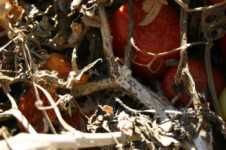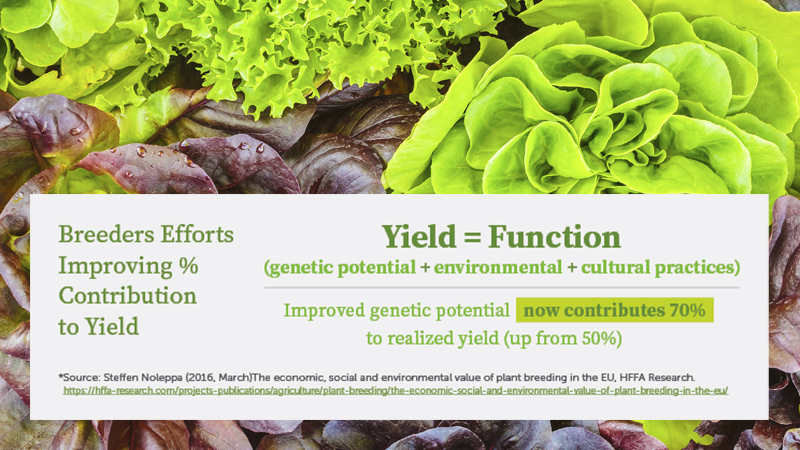Some Like It Hot…

It might not be a new disease, and in fact it shows up every summer in most warm-weather locales, but Southern blight seems to be becoming more of a headache in certain parts of the country. In California, where Joe Nunez serves as a farm advisor for University of California Cooperative Extension in Bakersfield, he says the disease has long been a problem in potatoes, a common crop. But in recent years the disease has been appearing more often. It could be because a lot of cotton acreage has been converted to vegetables, such as tomatoes.
“Cotton is such a woody, hardy plant it doesn’t get injured,” says Nunez. “Tomatoes get it bad.”
However, when it comes to vegetables, tomatoes are far from alone. The aforementioned potatoes can also suffer from Southern blight, says Nunez, as can garlic, onions, melons, peppers, and carrots. “It will kill any of those crops — any summer vegetable crop it will go to,” he says. “It has a huge host range, so it’s really difficult to rotate out of this one.”
The southern San Joaquin Valley is certainly known for getting hot in the summer, with triple digits not uncommon. But Southern blight only needs very warm conditions (of 86°F and greater) to progress rapidly, says Nunez. Because of that, it is not uncommon in many southern parts of the U.S., and is a huge problem for peanut growers in Texas, Georgia, and the Carolinas.
“Most growers and consultants think of cold, wet weather as ideal conditions for plant diseases, but there are a few plant diseases that only become an issue when the weather becomes hot,” he says. “Southern blight is one such disease that becomes an issue every summer, and growers with late fields are all too familiar with this disease.”
Germinates Like Seed
Southern blight is caused by a soil borne fungus called Sclerotium rolfsii, and is sometimes simply called “rolfsii.” It survives in the soil as small hard bodies of fungal tissue called sclerotia that resemble alfalfa seed. The sclerotia will germinate under warm moist conditions when a host plant is nearby. “That sclerotia will germinate and cause infection, maybe just one sclerotia infection,” he says. “Then it gets spread out just by moving soil, and will get bigger each following year, and by the third or fourth year you’ve got a field-sized problem. The first couple years it is usually not so noticeable, maybe just one or two plants. By the time it’s noticeable, it’s 30 plants, and you have a huge area that’s infected.”
The fungus will primarily attack a plant at the soil line, which makes its identification fairly easy. A tan mass of fungal growth can be seen with a mass of the alfalfa seed-sized sclerotia. The sclerotia will be initially white in color but become brown as they mature. The sclerotia will be extremely numerous. As the infection progresses plants will wilt and eventually die. But inspection of the infected plants will show fungal growth and numerous sclerotia on the plant at the soil line. Tomato fruit on the soil surface will also become infected (see photo above) as well as potato tubers.
Tough To Control
Control of Southern blight can be difficult, says Nunez, and there just aren’t a lot of viable options. Deep plowing will bury the sclerotia and get it away from attacking plants at the soil line. And crop rotations to non-host plants such as small grains will help to significantly reduce sclerotia levels in the field, but there aren’t any vegetable crops that are viable as a rotational crop. There used to be fungicides that could be used at planting that would help manage the disease, the most common being PCNB. “But that was taken off the market last year,” he says, “so everyone’s scrambling to find products.”
Once sclerotia levels become too numerous in a field for any possible cultural control, fumigation will need to be considered. “Metam sodium will control Southern blight,” says Nunez, “but the costs of fumigation may limit this option in some situations, and metam has its own issues relative to regulation.”
To help provide growers with help with Southern blight, Nunez is currently doing field trials, looking at other fungicides, including biological products. Other than that, about all growers can do is think their varieties through carefully.
“If they know they have a field with Southern blight in it, it should be an early planted field and an early harvested field,” he says. “Save the clean fields for the later harvest planting dates. If it’s not too bad, you can do it that way. But if you have a field that’s really bad, don’t bother (planting), because that field will completely collapse.”









